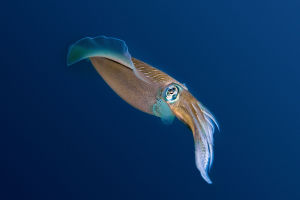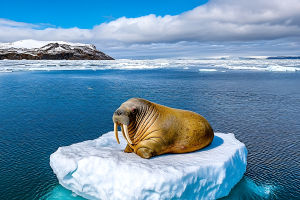Coral reefs are some of the most vibrant and diverse ecosystems on Earth. However, these ecosystems are under threat, and urgent action is needed to protect them.
Climate change, rising sea temperatures, and human-induced pollution have triggered coral bleaching events around the world. This article takes a closer look at what coral reefs are, the causes and effects of coral bleaching, and what we can do to help prevent further damage.
What Are Coral Reefs? Are They Plants or Animals?
At first glance, corals may seem like plants, as they grow and thrive in the ocean's shallow waters. However, corals are actually animals. They are made up of tiny, soft-bodied creatures called coral polyps. These polyps live in colonies and secrete calcium carbonate to form the hard, rock-like structures we associate with coral reefs. The vibrant colors we see in coral reefs come from tiny algae called zooxanthellae, which live inside the coral polyps and provide them with nutrients through photosynthesis.
The Importance of Coral Reefs
Coral reefs play a critical role in the health of our oceans. They provide shelter, food, and breeding grounds for countless marine species. In fact, coral reefs are often referred to as the "rainforests of the sea" due to their incredible biodiversity. Over 1,500 species of fish, along with many other organisms, depend on coral reefs for their survival. These ecosystems are vital to maintaining the balance of marine life and ensuring the health of ocean ecosystems.
What Is Coral Bleaching?
Coral reefs are incredibly resilient, but they are also sensitive to environmental changes. Coral bleaching occurs when corals expel their symbiotic algae (zooxanthellae) in response to stress. Without these algae, the corals lose their color and appear white. While coral bleaching does not immediately destroy corals, it weakens them significantly. If the stress continues, the corals may eventually die.
The phenomenon of coral bleaching is a clear signal that the coral is under severe stress. If conditions improve, corals can recover by reabsorbing algae and regaining their color. However, if the stress persists, the coral will continue to decline and may eventually die.
The Causes of Coral Bleaching: Global Warming and Human Pollution
The main cause of coral bleaching is climate change. As global temperatures rise, so do sea temperatures, creating an environment that is unsuitable for coral growth. Coral reefs thrive in water temperatures between 20°C and 28°C. If the water temperature exceeds 30°C or falls below 18°C, the corals will expel their algae and begin to bleach. This temperature shift is often caused by global warming and is exacerbated by the greenhouse effect, which leads to ocean acidification and weakens corals' ability to absorb the necessary minerals for their growth.
Can we save coral reefs from extinction? | Corals: On the Brink
Video by Science Communication Lab
In addition to rising temperatures, human pollution also plays a significant role in coral bleaching. Pesticides from agriculture, industrial runoff, and even everyday products like sunscreen contribute to the degradation of coral ecosystems. These pollutants reduce the ability of zooxanthellae to photosynthesize, further harming coral health.
How Does Coral Bleaching Impact the Ecosystem?
The effects of coral bleaching extend beyond the corals themselves. As coral reefs are crucial to marine biodiversity, their decline directly impacts the entire ocean ecosystem. A dying coral reef can no longer support the marine life that relies on it for food and shelter. The loss of biodiversity is not just a local issue; it has far-reaching implications for global marine health.
What Can We Do to Prevent Coral Bleaching?
There are several actions we can take to help protect coral reefs and mitigate the effects of coral bleaching. The most urgent measure is to address climate change by reducing greenhouse gas emissions and taking steps to prevent further global warming. Additionally, reducing pollution from agricultural runoff, industrial waste, and everyday products like sunscreen can help minimize the harmful effects on coral ecosystems.
Local efforts are also essential. By supporting marine conservation initiatives, like those led by organizations such as Greenpeace, we can advocate for stronger protections for coral reefs and push for more sustainable practices in ocean management.
Conclusion: Saving Coral Reefs, a Task for Us All
The health of coral reefs is a reflection of the health of our oceans and our planet. If we want to continue to enjoy the benefits of these beautiful ecosystems, it is up to us to take action now. Whether throughreducing our carbon footprint, supporting conservation efforts, or spreading awareness, each of us can play a role in saving the coral reefs.
The battle to protect coral reefs is not over, but with collective effort, we can ensure that these incredible ecosystems continue to thrive for generations to come. Join the movement today—our oceans need us more than ever!
Lykkers, let’s come together to protect the ocean! The coral reefs are in danger, but we can make a difference! What steps will you take to help? Let’s share ideas and work together!


